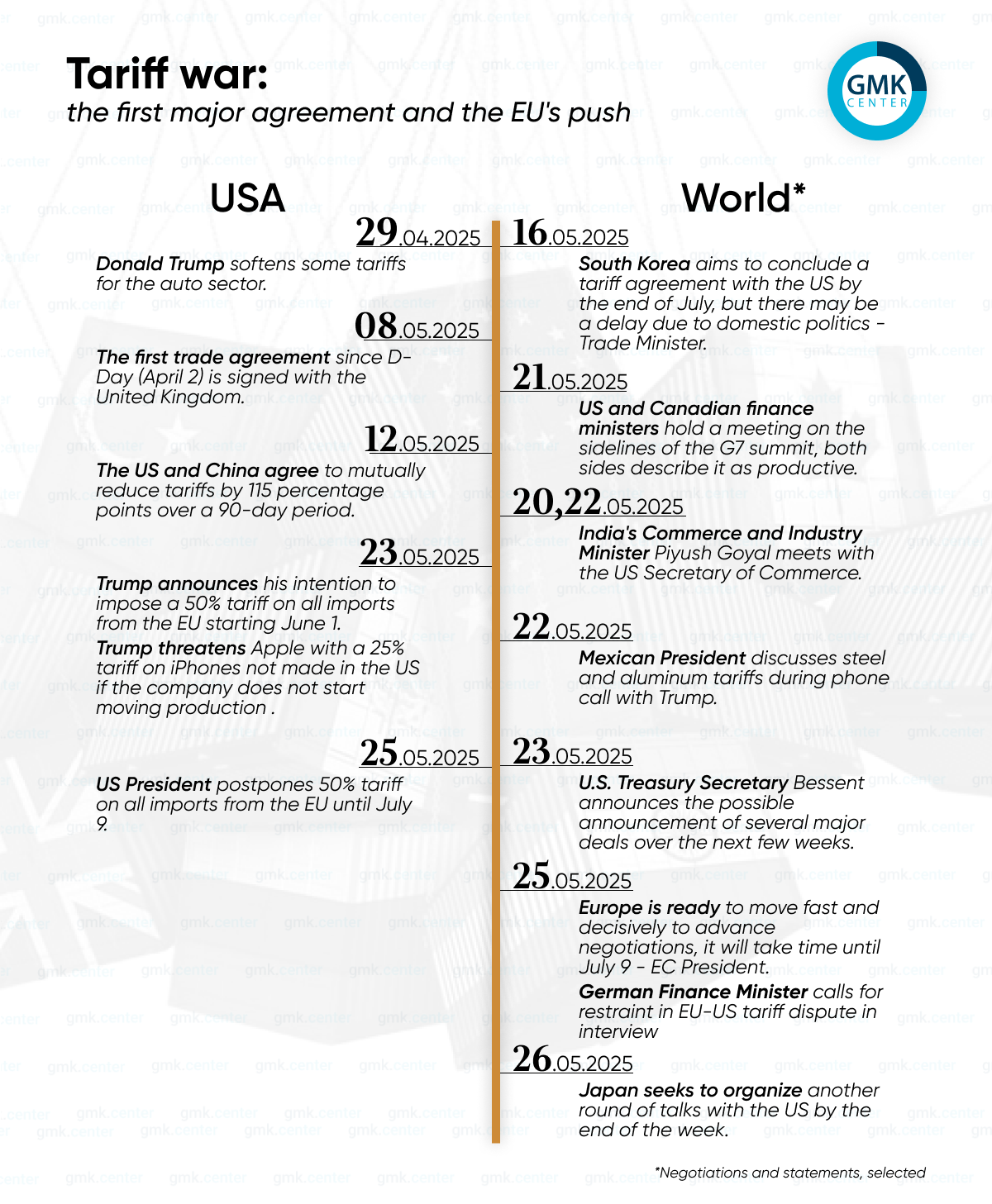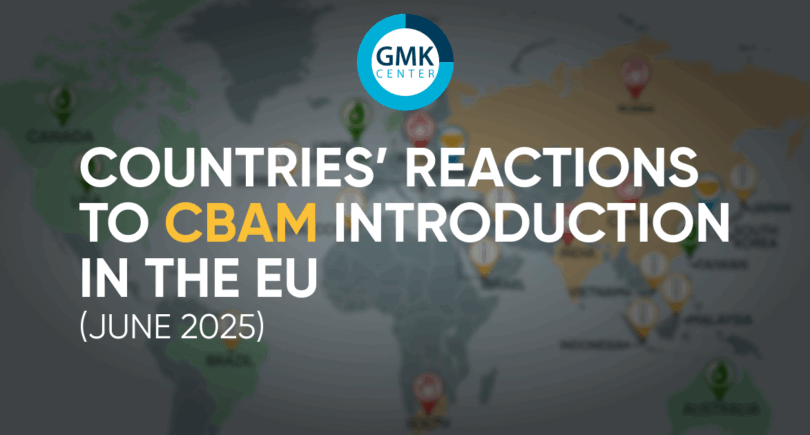
Infographics trade war 1264 28 May 2025
In May, the US signed a trade deal with Britain, Trump promised and postponed 50 percent tariffs for the EU
In May, the United States agreed to a “tariff truce” with China for 90 days. According to the agreement, the United States will reduce duties on Chinese goods from 145% to 30%, and China will reduce tariffs on American imports from 125% to 10%. China will also take administrative measures to suspend or cancel non-tariff countermeasures imposed on the United States since April 2 this year.
In addition, this month, the first trade agreement since the so-called “Liberation Day” (referring to April 2, when large-scale tariffs were announced for dozens of countries) was signed. The agreement leaves in place the overall 10 percent U.S. tariffs on British exports. However, the UK government announced that the 25 percent tariff on steel would be reduced to zero. At the same time, the U.S. side informed about the upcoming negotiations on an alternative agreement on steel and aluminum tariffs under Section 232.
The United States reduced the duty on exports of British cars from 27.5% to 10% – the reduced rate will apply only to 100 thousand vehicles. The UK canceled the US tariff on ethanol, and an agreement was reached on agricultural products.
At the same time, on May 23, Trump announced his intention to impose a 50 percent tariff on all EU imports starting June 1. In his post on Truth Social, he noted that trade talks between the parties were “going nowhere.” On the eve of this statement, Bloomberg reported that the European Union had sent a revised trade proposal to the United States.
However, two days later, European Commission President Ursula von der Leyen said she had a “good conversation” with the US president and promised to move the negotiations forward quickly. After the call, Trump agreed to postpone the introduction of 50 percent tariffs for the European Union until July 9.
On May 26, European Commissioner for Trade Maroš Šefčovič said that the EU remains fully committed to reaching a trade agreement with the United States, and the parties continue to maintain constant contact.
As for India, which in April was named by U.S. Treasury Secretary Scott Bessent as a country that could be the first to sign an agreement with the United States, this work is still ongoing.
Indian Commerce Minister Piyush Goyal held two meetings last week with his American counterpart Howard Luthnick as the two countries seek to sign a temporary trade agreement by July that will include tariff reductions and certain non-tariff barriers. The second tranche of the agreement will be finalized by the fall (September-October), while the timing of the third tranche has not yet been determined.
In total, India is currently negotiating about 10 free trade agreements and bilateral trade agreements with various partners around the world, and on May 6, it reached an agreement with the United Kingdom.
It is noteworthy that Trump’s threat against Apple was another trigger in these negotiations, The New York Times noted. A few years ago, almost every iPhone was assembled in China; by the end of 2025, according to some estimates, 25% or more will be produced in India. However, Indian officials have not yet decided how to respond to this.
It is worth noting that in mid-May, at the end of his trip to the Middle East, Trump admitted that trade negotiations were moving too slowly to meet the needs of every country that wants to conclude a deal with the United States. So he said he would give other countries a few more weeks, and then the Treasury Secretary and Commerce Secretary would simply notify the United States’ trading partners of the new tariffs.




